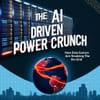The rapid growth of artificial intelligence (AI) data centers is putting an unprecedented strain on the power grid, with potentially severe consequences for both the environment and the economy. AI data centers are becoming increasingly power-hungry, with estimates suggesting they'll consume around 22% of US electricity by 2025, up from 4.4% in 2024. This surge in demand is outpacing the development of new power generation and transmission capacity, leading to concerns about grid stability and reliability.
The problem is multifaceted. Peak demand spiking from AI data centers can lead to grid overload and power outages. The retirement of coal and gas-powered generation sources is not being matched by the deployment of renewable energy projects, exacerbating the power shortage. Supply chain constraints and long permitting processes are also hindering the development of new power infrastructure.
The consequences of this power crunch could be significant. Power outages can have devastating economic and social impacts, while increased costs for powering AI data centers could be passed on to consumers and impact the competitiveness of businesses. Moreover, the increased demand for power is likely to lead to increased CO2 emissions, making it more challenging for companies to meet their sustainability goals.
To mitigate these risks, experts are calling for grid modernization, increased investment in energy storage technologies, and a greater emphasis on renewable energy sources. Efficient data center design can also play a crucial role in reducing power consumption and alleviating the strain on the grid. As the demand for AI data centers continues to grow, finding solutions to the power crunch will be essential to ensuring a sustainable and reliable energy future.


